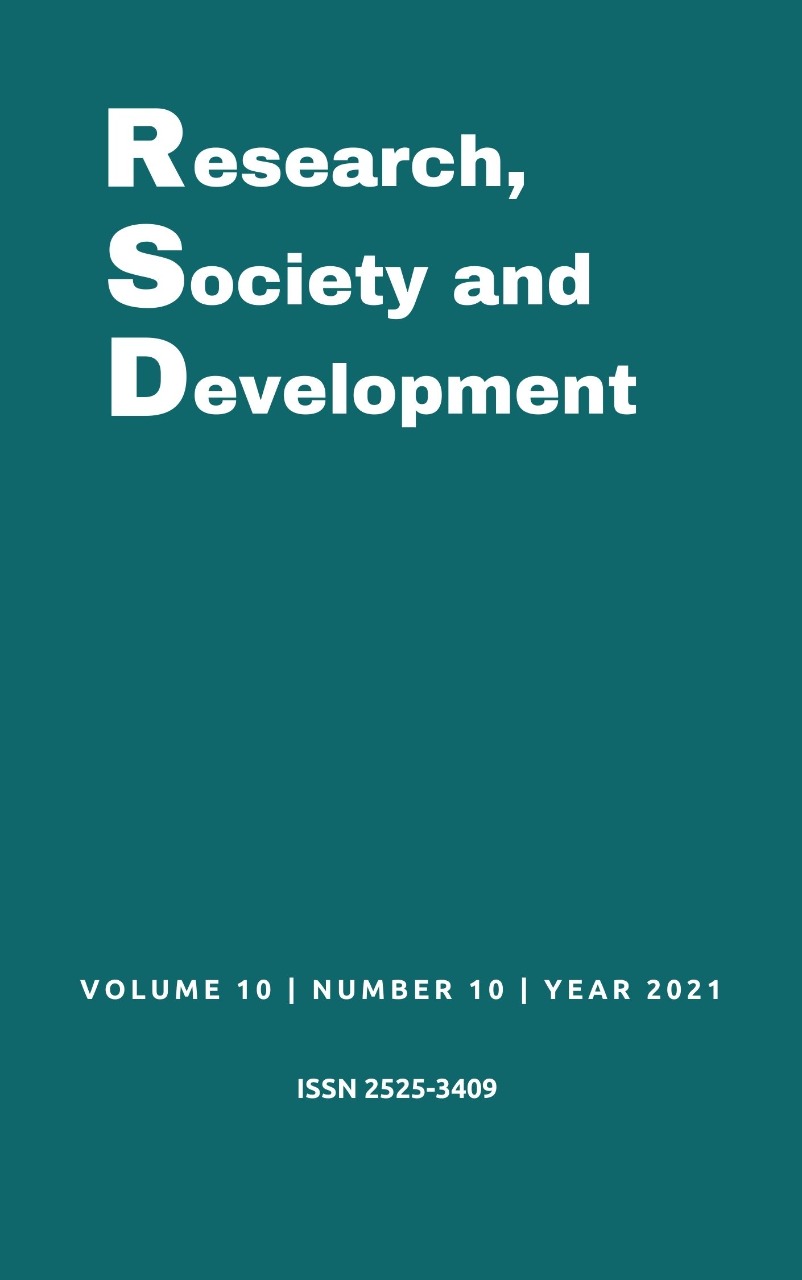Analysis of Geographical Indication records deposited with the National Institute of Industrial Property - INPI
DOI:
https://doi.org/10.33448/rsd-v10i10.19031Keywords:
Geographical Indication; Indication of Origin; Appellation of origin.Abstract
This article aims to analyze the Geographical Indication records filed at the National Institute of Industrial Property – INPI. There are two types of Geographical Indications: Indication of Origin (IP) and Denomination of Origin (DO) and in Brazil, the INPI is responsible for analyzing, monitoring the processes and granting registration. In order to obtain data about the Brazilian scenario of GIs, a qualitative approach was used, using the literature review as a technical procedure. After the literature review, the analysis of Geographical Indication (GI) data from the base of registrations granted in the national territory until the month of July 2021 by the INPI was carried out, observing different information such as the number of GI concessions in a timeline, the its distribution by states, more specifically the GIs referring to agribusiness, DO and/or IP were analyzed and, finally, among these, the Geographical Indications of coffee growing. As a result, the research shows that the first GI was granted in 2002 in the IP modality where “Vale dos Vinhedos” became recognized as a geographical name and currently the country already totals 86 Geographical Indications, 19 in the Denomination of Origin modality and 67 in Indication of Origin mode. Brazil has 12 Geographical Indications of Coffee, including 4 DOs and 8 IPs. Only one of these records is in Bahia where there are potential regions for future GIs such as Chapada Diamantina and Planalto da Conquista.
References
Almeida. L. F., & Zylbersztajn. D. (2017). Fatores-chave de sucesso na cafeicultura brasileira: desafios presentes e futuros. Int. J. Food SystemDynamics 8 (1), 45-53.
Associação Brasileira da Indústria do Café (ABIC). (2020). Recomendações técnicas e categorias de qualidade do café.
Brasil. (1994). Decreto nº 1.355, de 30 de dezembro de 1994.
Brasil. (1996). Lei nº 9.279, de 14 de maio de 1996.
Brasil. (2018). Contas Regionais do Brasil — 2010-2016. Instituto Brasileiro de Geografia e Estatística (IBGE).
Brasil. (2018). Instrução Normativa nº 095/2018, de 28 de Dezembro de 2018.
Brasil. (2021). Estatísticas econômicas da agricultura e pecuária. Instituto Brasileiro de Geografia e Estatística (IBGE).
Brasil. (2021). Manual de Indicações Geográficas. Instituto Nacional da Propriedade Industrial (INPI).
Brasil. (2021). Pedidos de indicação Geográfica concedidos e andamentos. Instituto Nacional da Propriedade Industrial (INPI).
Bruch, K. L. et al. (2009). Indicação Geográficas de produtos agropecuários: Aspectos legais, importância histórica e atual. In: PIMENTEL, L (Org.). Curso de propriedade intelectual e inovação no agronegócio: Módulo II, indicação geográfica. Brasília: MAPA, SEaD/UFSC/FAPEU.
Caldas, A. S., Cerqueira, P. S., & Perin, T. F. (2007). Mais além dos arranjos produtivos locais: as indicações geográficas protegidas como unidades de desenvolvimento local. RDE – Revista de Desenvolvimento Econômico, 7, 5-16.
Consórcio Pesquisa Café. (2021). Relatório sobre o mercado cafeeiro – abril 2021, OIC.
Giesbrecht, H. O. et al. (2016). Indicações geográficas brasileiras. SEBRAE, INPI.
Gonçalves L. A. da S. et al. (2018). Panorama das Indicações Geográficas no Brasil. RDE – Revista de Desenvolvimento Econômico, 3, 130-144.
Lazzari, M. R. (2012). Economia gaúcha dependente da agropecuária. Carta de Conjuntura FEE, 21, 1.
Lobo, P., & Ferreira, I. (2019). A publicidade com o argumento na origem. Uma abordagem exploratória das marcas cidade do Porto e Vinho do Porto. Media & Jornalismo, 19, 181-191.
Manfrin, A. M. (2020). Influência da informação de Indicação Geográfica nas respostas cerebrais do consumidor: um estudo experimental com café e EEG. 2020. Dissertação (Mestrado em Administração de Organizações) – USP, Ribeirão Preto.
Marconi, M. de A., Lakatos, E. M. (2007). Metodologia cientifica: ciência e conhecimento científico, métodos científicos, teoria, hipóteses e variáveis. (5a ed.), Atlas.
Pereira A.S. et al. (2018). Metodologia da pesquisa científica. UFSM.
Downloads
Published
How to Cite
Issue
Section
License
Copyright (c) 2021 Alline Maria Trancoso Ferraz Silva David; Carla Simone Araújo Gomes Sarmento; Sylvana Naomi Matsumoto; Jerisnaldo Matos Lopes; Edvaldo Oliveira; Odair Lacerda Lemos

This work is licensed under a Creative Commons Attribution 4.0 International License.
Authors who publish with this journal agree to the following terms:
1) Authors retain copyright and grant the journal right of first publication with the work simultaneously licensed under a Creative Commons Attribution License that allows others to share the work with an acknowledgement of the work's authorship and initial publication in this journal.
2) Authors are able to enter into separate, additional contractual arrangements for the non-exclusive distribution of the journal's published version of the work (e.g., post it to an institutional repository or publish it in a book), with an acknowledgement of its initial publication in this journal.
3) Authors are permitted and encouraged to post their work online (e.g., in institutional repositories or on their website) prior to and during the submission process, as it can lead to productive exchanges, as well as earlier and greater citation of published work.

